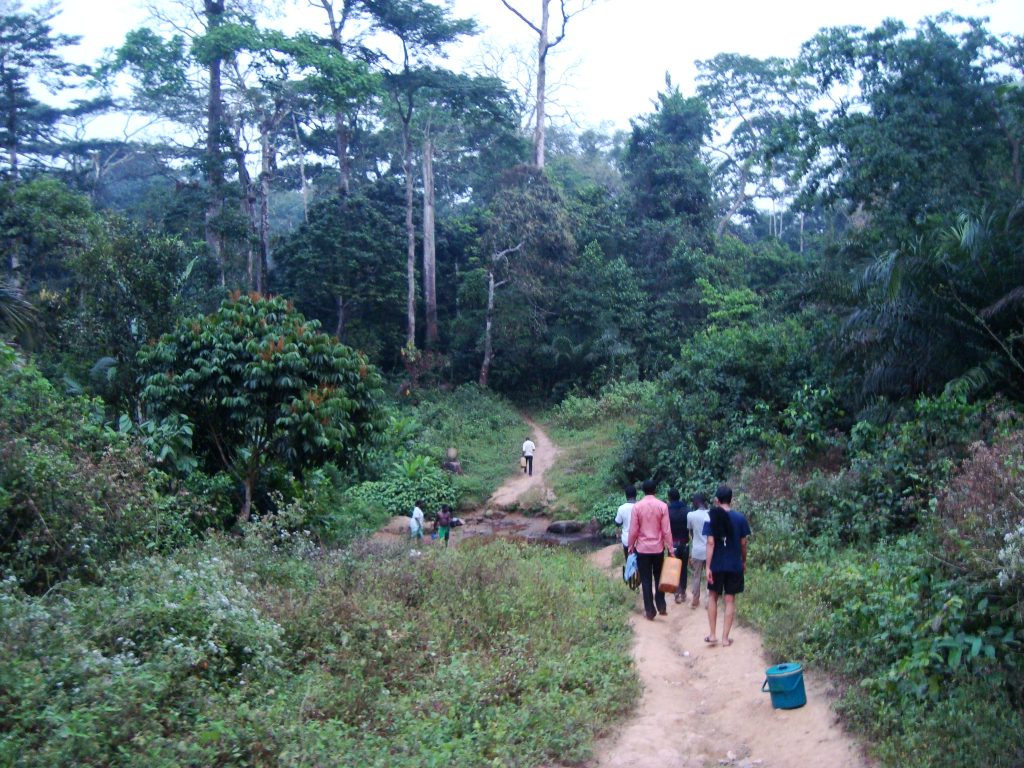Nature
By: Maria Andrea Nardi
Researchers working in this transdisciplinary project have different fields of expertise, ranging from theology to natural science. We have, however, a common interest: we are all interested in nature. We wonder whether nature will be at peace after armed-conflicts have come to a halt.
We have formulated some guiding questions: what happens to nature after a peace agreement? How is the natural environment transformed in post-conflict societies? What happens to natural resources once a country is ready for development?
Another common concern we have is: do we all have a common understanding when we talk about nature, natural environment and natural resources? Are these terms referring to similar things? And what about the notions of ecosystems or the non-human world for instance? What ideas are behind each of these terms?
Here is an attempt to bring this into discussion. We do not intend to answer the question “What is Nature?” We simply want to present some notions related to nature, so that we can start building a common ground for future analytical endeavours.
The idea of nature relates in general to the non-human world. We usually refer to nature when we think of all that is not social/cultural. For many, however, the nature-society is a forced dichotomy (*). After all, humans are biological beings and as such, they are also part of nature. For some, the non-human world also refers to the spiritual and/or cosmological world, which does not necessary refer to nature.
The notion of natural environment refers to the nature that surrounds humans. If humans are in the centre and surrounded by nature, then an obvious question is: who is being surrounded? Are all humans equal? What different “natures” do we have access to and why?
The term natural resources refer to the idea that some “nature” can be valued and become a resource for something. The obvious question here is: which value system and whose values? In current global neoliberal capitalism, is the value given by transnational corporations to nature the same as the value given by communities whose livelihoods depend directly on nature?
It seems then that nature has to do with life, with processes that are conditioned by, but go beyond, human control. Having this in mind then, we can agree that for analytical purposes, we will use the notion of nature to refer to non-human processes (such as biological or geological) in different time and space scales. Even such processes are not governed by human “rationality” they are very much conditioned by political, economical, and social activities. For example, we will focus on nature when we want to know how soil or trees are produced, how land is distributed or put under production, how forest is used or conserved, how oil and minerals are exploited, how water is cleaned or polluted, who benefits from such activities, who has access to environmental political participation, and whose worldviews are recognized in policy making and legislation.

Therefore, we will in this project focus in human activities controlling and regulating how nature is produced, consumed, distributed, and lived by different group of people during peace-building processes and whether this promotes sustainable peace and environmental justice or not.
In any case, what do you think nature is and how does it matter in post-conflict situations?
Comments are welcome!
(*) Division into two mutually exclusive, opposed, or contradictory groups. dichotomy. Dictionary.com. Dictionary.com Unabridged. Random House, Inc. http://www.dictionary.com/browse/dichotomy (accessed: October 9, 2017).
Peace
By: Lina Eklund
Most people will probably agree that peace is something we desire. We want the dead to rest in peace, and we also want to live in peace (although that seems like a much tougher goal). But what does peace really mean?
Is peace binary – either there is peace or there is not – or is there a peace scale? Can you have more peace and less peace? 100% peace, or 54% peace?
There are many definitions of peace in the dictionary. Peace can mean a state of quiet and calm. Peace can also mean the absence of conflict, disturbance, or war. However, war or conflict is never defined as the absence of peace. Why is that? Conflict is active but peace is passive?

In our discussions as an interdisciplinary group we have realized that the process towards peace has many different stages. The first step is a ceasefire, which means that the hostilities stops, although the conflict is still not resolved. The next step, a peace agreement or treaty, is a formal agreement between two or more parties in conflict to end the war. This agreement often includes issues like borders, access to resources, refugees and debts. A peace agreement, however, doesn’t necessarily mean that all conflict is gone. We may have a “negative peace” – referring to the absence of armed violence – but the aim is a “positive” peace, i.e. the absence of structural and cultural violence, where basic human rights are respected. In the aftermath of a peace agreement, there’s still a lot of peacebuilding to be made, both on a structural level (normalization) and on a cultural level (reconciliation), which may take a long time.
From our discussions as an interdisciplinary group it has become clear that peace is not a simple term to work with. It means different things to different people, and it has several different definitions and stages that needs to be considered when discussing the effects of peace.
Furthermore, peace is often positively associated with nature. Peaceful moments can be experienced in a forest, on a mountain or by a lake. Yet in this theme we discuss not only the positive effects of peace on nature, but also the negative effects. In this view peace comes with some processes that are not necessarily peaceful from a nature-perspective: economic growth and resource extraction.
We therefore wonder: who is the peace for and who it should benefit to be sustainable?
